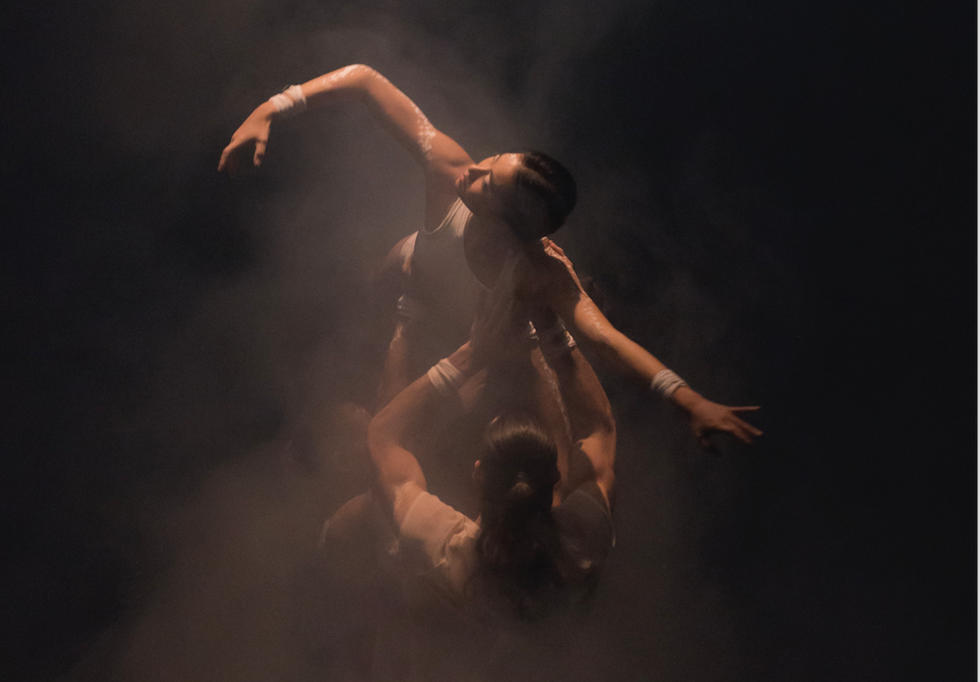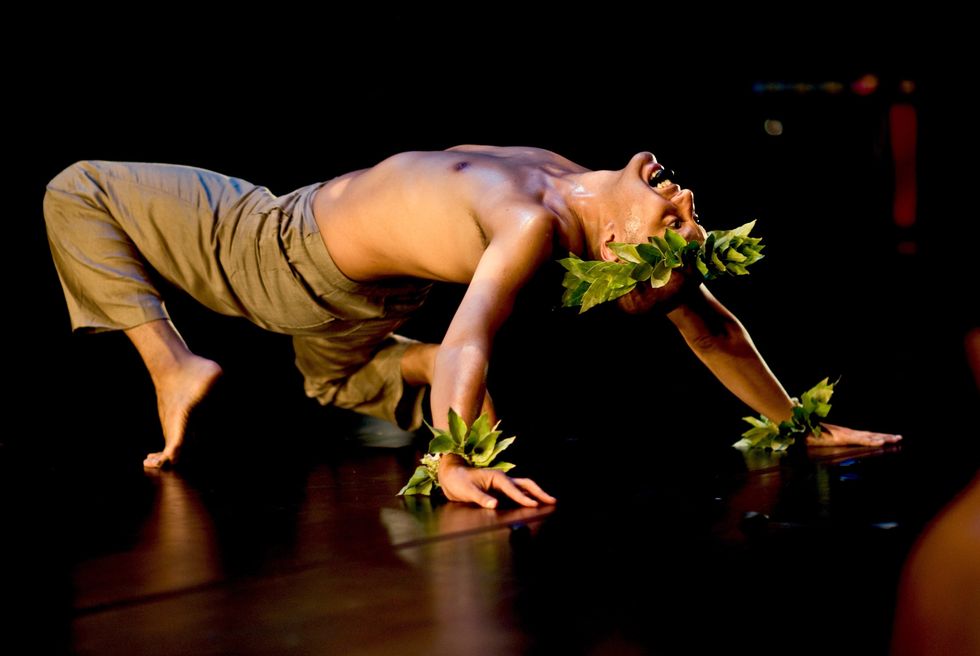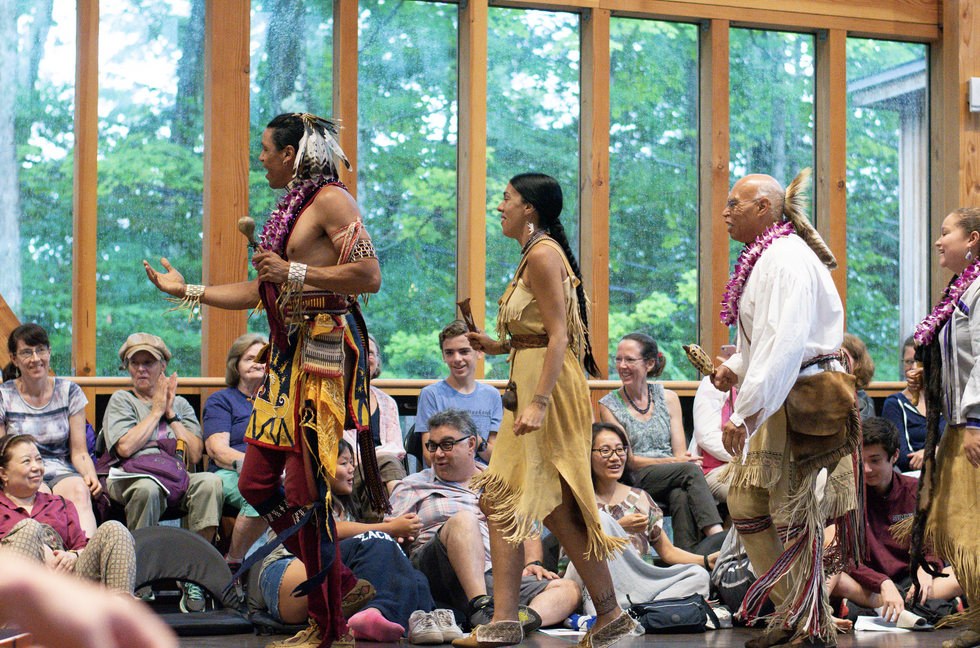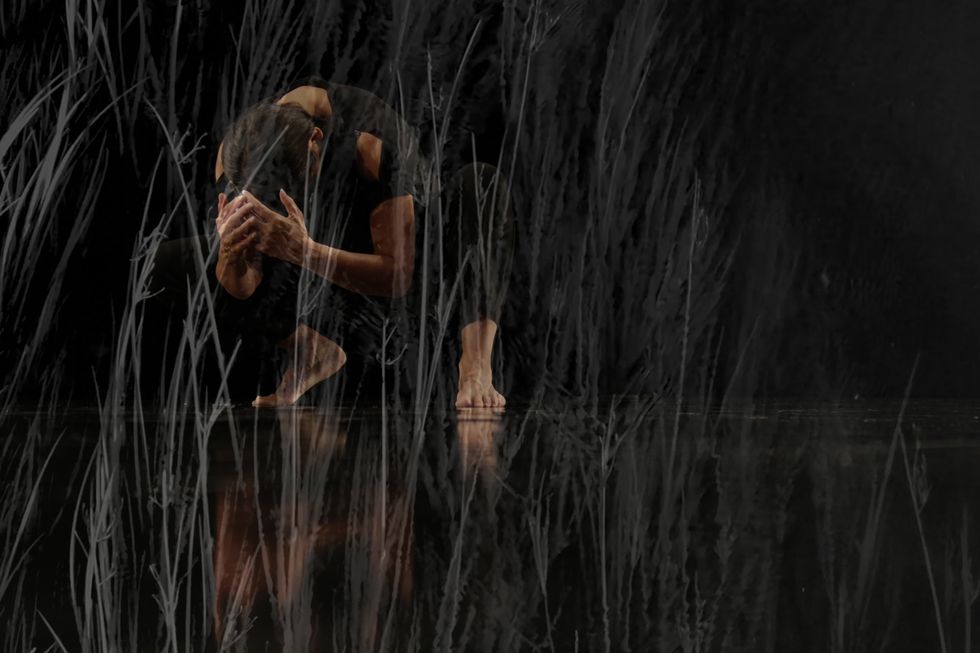Who Are Land Acknowledgments Really For?
Most dance performances used to begin predictably: The lights dimmed, the curtain rose and the music started. But in recent years, some audiences have started experiencing a new kind of preshow ritual: Someone walks onstage—perhaps the director or an usher—and names the indigenous tribes that have lived on the land where the venue is situated, maybe offering some information about those people or taking a moment of silence to honor them.
Land acknowledgments like these have become a bona fide trend in institutions of all kinds—from business conferences to major universities to art museums—across the country. (And in Canada, New Zealand and Australia, where they are even more common.) But they’ve particularly caught on in socially conscious dance venues.
It’s possible that this bandwagon effect stems from the embodied nature of our form—as dancers we physically feel our connection to the land and the space we occupy. Or perhaps it’s just a matter of people wanting to jump on a trend. Either way, their rising popularity in dance raises questions about who these acknowledgments are really for.

Rob DiVito, Courtesy Red Sky
Though land acknowledgments are now most visibly practiced by non-native people as a kind of reparatory action, they stem from the ways in which native people have been relating to the land—and to one another—for centuries. This can take the form of welcoming newcomers onto a piece of land, or of asking permission to travel into a territory.
“We have always acknowledged, paid respect to and been in relationship to where we are, whether in our own homelands or when we travel,” says Emily Johnson, a New York City–based Yup’ik artist who has helped venues like Abrons Arts Center develop their land acknowledgments.
In dance, most land acknowledgments are practiced as part of a preshow announcement—sometimes lumped in with information about fire exits or a thank-you message to donors and board members. For audiences who have never experienced one, they can feel out of place or jarring. More importantly, there’s a danger of trivializing their meaning, or of them becoming so scripted that audiences tune out.
“Sometimes they sound like reading off a list of people who died in a war,” says Rosy Simas, a Minneapolis-based Seneca dancer and choreographer, adding that this can further invisibilize native people, or perpetuate the myth that there are no native people left.
Rather than reading words off a page at all, some native dance artists instead practice nonverbal land acknowledgments. Santee Smith, for example, a Toronto-based artist from the Six Nations of the Grand River, has a solo work called Blood, Water, Earth, which she considers to be like “an embodied land acknowledgment.” In Christopher K. Morgan’s piece Pohaku (“stone” in Hawaiian), he enlists community members to help gather stones from the land and return them after the performance. This teaches the audience about how Hawaiians use stones traditionally, and about the natural environment where the piece is being performed.

Pohaku. Brian S. Allard, Courtesy Morgan
Not all native people do land acknowledgments, though, and there are nearly as many protocols around acknowledgment as there are tribes in the U.S. But these nuances often get lost when organizations introduce land acknowledgments without proper research, says Simas.
Some make the mistake of grouping all native people together, she says, while others fail to realize the full history of the land they’re on. For example, with forced removal and voluntary relocation, the descendants of the original inhabitants of a given area may now live across the country. Or in New York City, while some land acknowledgments mention only the Lenape people, Simas points out that the island of Mannahatta was for hundreds of years a place of trading where many nations came and went. “When you exclude the complexity of the history of native people, it adds to the damage of colonization,” she says.
Learning the full history—and creating a land acknowledgment that has depth and intention—requires connecting with local indigenous communities. This process should be a collaboration; find out the community’s protocols and discover what kind of relationship would be meaningful to them (which may or may not even include land acknowledgment).
For institutions that have historically not engaged with native artists, this can be an uncomfortable step. “Indigenous people want to make connections with organizations, but they don’t want to come in through the usual door, which is a revolving door,” says Sandra Laronde, who is originally from the Teme-Augama-Anishinaabe in northern Ontario and is director of Toronto-based Red Sky Performance. “Imagine the distrust of not being included in an institution forever and now people want to build relationships.”
But that discomfort can be generative, says Ali Rosa-Salas, director of programming at Abrons Arts Center. While writing Abrons’ land acknowledgment, Rosa-Salas consulted with Johnson and the Lenape Center, both of whom she has since worked with on other projects, such as a series of ceremonial fires featuring dancing, food and sharing of indigenous knowledge.

Grace Kathryn Landefeld, Courtesy Jacob’s Pillow
Rosa-Salas emphasizes that acknowledgments should say something specific about the institution itself: Its relationship to colonization, the commitments it is making to indigenous people, how it will be held accountable to these commitments.
Acknowledgment must be paired with action; otherwise it amounts to tokenization, or what Johnson calls “performing solidarity.” “If you are performing solidarity so that you look good, you’re not going to look good,” she says. “That’s seen from the very beginning. You are continuing colonizers’ efforts.”
Some organizations even use their land acknowledgment as an excuse not to do more, she says. “If you’re not embedding this within the DNA of your organization, your board structure, your policies, your curatorial practices, your bylaws, you are at the risk of losing the steps forward,” she says.
Laronde points out that sometimes institutions may want to do a land acknowledgment, “but indigenous people are not on their boards or staff and are not the artists they program,” she says. “It has to be more pervasive. They have to start somewhere, but they can’t stay there.”

Imranda Ward, Courtesy Simas
Indeed, acknowledgments are often framed as a starting point for organizations. Simas takes issue with this idea: “It’s like, What do you mean, ‘start’? As if there hasn’t already been constant activism for the last seven generations of my people.” Even the word “acknowledgment” can feel passive. “We can say something happened, but if we’re not working to rectify that, things are remaining in a stasis,” says Rosa-Salas.
Building a meaningful land acknowledgment, and doing the work that should go along with it, takes time. Morgan, a native Hawaiian who serves as executive artistic director of Dance Place in Washington, DC, says his organization has been working to form a connection with DC’s indigenous community first. This coming year, it plans to develop a land acknowledgment through community engagement work associated with Simas’ project Weave.
Forming real and long-lasting relationships with indigenous communities and artists can help organizations form deeper connections to their sense of place, says Laronde. And when done with intention, an acknowledgment can be someone’s much-needed first exposure to the history of the land where they’re living.
“As an indigenous person it feels so good when I hear others acknowledge the land,” says Johnson. “It means we are being seen more and more.”



